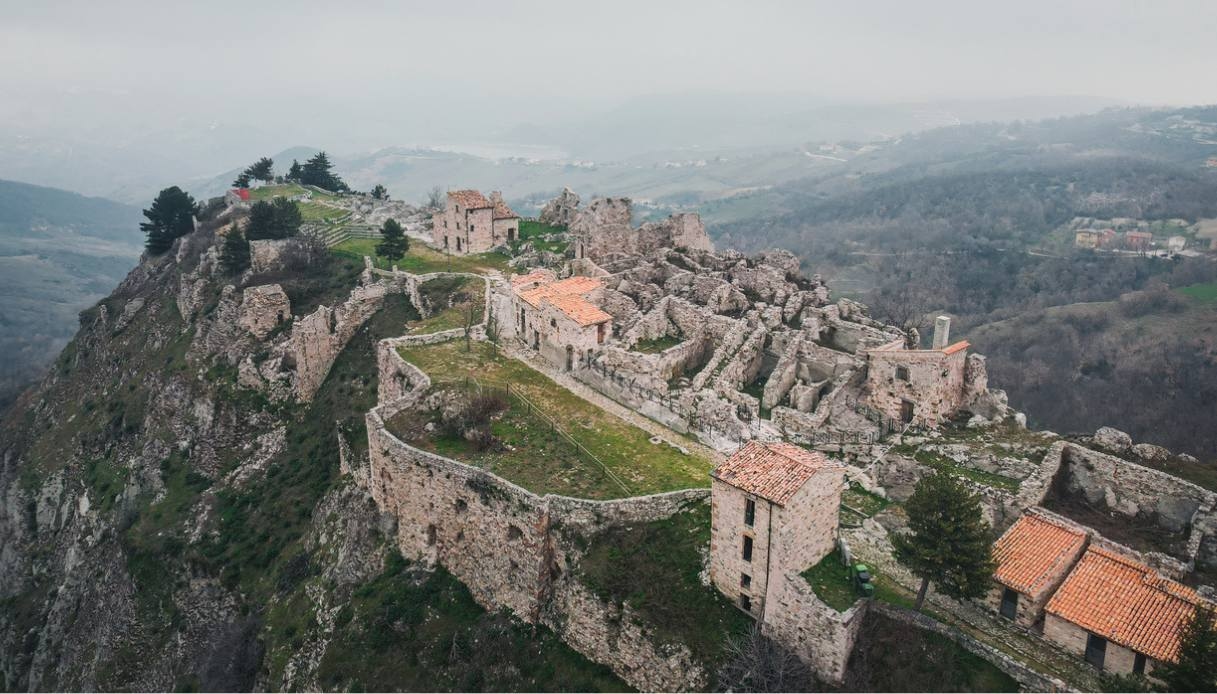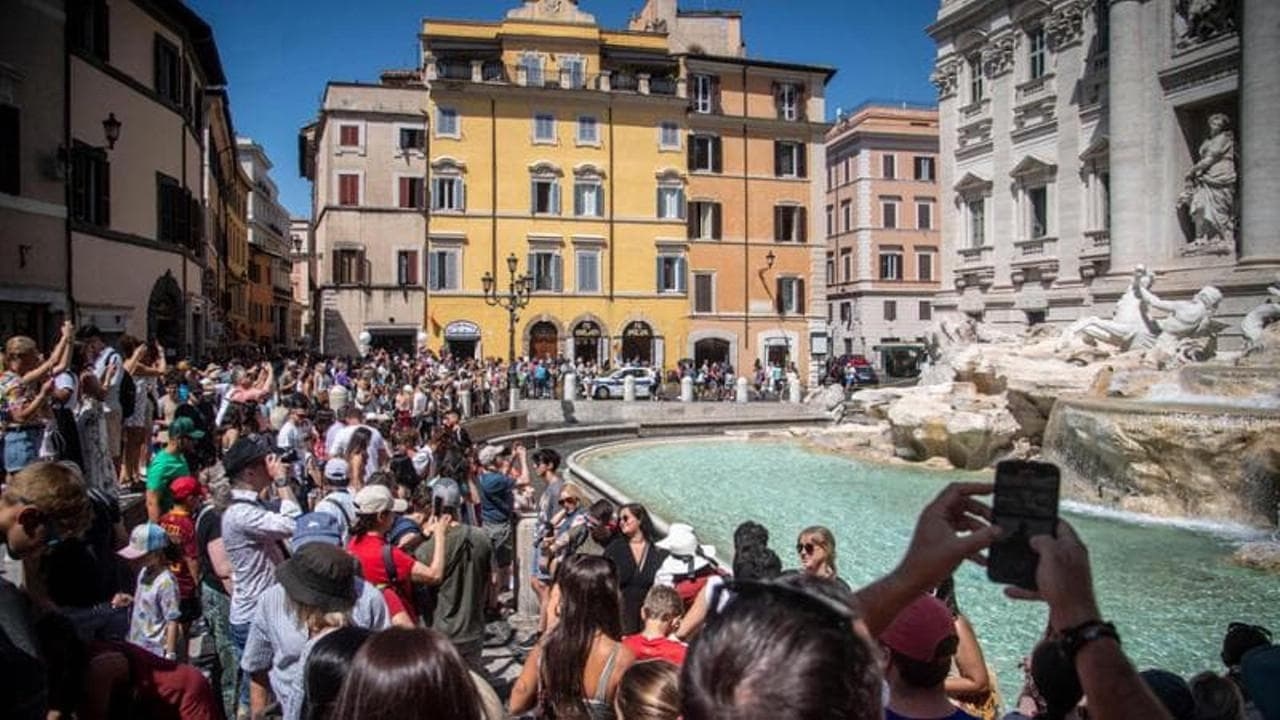The streets of Gessopalena Vecchia: a journey through the past and silence.

Gessopalena Vecchia , in the province of Chieti, is an abandoned village built on a gypsum hill, a material that allowed niches and rooms to be carved directly into the rock. The ruined houses and narrow alleys show signs of medieval life, while within the walls, older traces of pre-Roman and Roman settlements emerge.
Silence pervades every empty space, but these are certainly not devoid of stories. The town appears fragile, suspended between memory and time, with every stone and every glimpse suggesting the lives of those who once lived there, leaving it to the imagination to complete what has disappeared.
Roots and Stones: The History of the VillageBuilt on a chalk hill in the heart of Abruzzo , Gessopalena Vecchia developed in the Middle Ages, taking advantage of the unique conformation of its valuable soil. The remains of pre-Roman and Roman settlements discovered nearby testify to the fact that the surrounding hills were inhabited centuries earlier, while the stone walls and narrow streets tell of the medieval life that dominated the surrounding valley.
The abandonment was finally completed in 1959, when the population moved towards the new Gessopalena. Today, the houses are falling to pieces, while the alleys remain empty and nature is slowly reclaiming the spaces, creeping in between the collapsed walls and niches.
Architecture and landscapesThe houses are huddled along narrow, winding alleys, forming an almost improvised grid that follows the curves of the chalk spur on which the town stands, at approximately 654 meters above sea level. Some buildings emerge almost as if fused with the rock: niches carved into the chalk have become cellars, stables, or storage areas, while the limestone facades reveal a simple yet resilient medieval architecture .
In the heart of the centre you can still see traces of the ancient defensive walls , such as the wall that surrounded the rocky spur in medieval times.
On Via Castello stands the Church of Sant'Egidio , now a ruin, which preserves a 16th-century limestone portal framed in plaster. The doors, often still intact, and the low windows offer glimpses of once-bustling internal courtyards: artisan workshops, peasant homes, and rooms that endured the pace of daily life. Arched doorways, a surviving tower, and several circular wells complete the visit.
Gypsum undoubtedly profoundly influenced the construction and life of the village due to its softness, but at the same time, its friability necessitated frequent restorations, which became increasingly difficult to sustain. It's no coincidence that the cavities, the friable nature of the material, and the difficulty of maintenance played a role in the gradual abandonment and slow decline of the village.
The landscape is impressive: from the hill, you can see the Aventin Valley and, on clear days, even the Adriatic Sea on the horizon. The sunset light flows through the alleys and caresses the faded stones, and among the now-torn balconies, dangling shutters, and a breeze blowing through bare rooms, a profound stillness reigns. The vines once cultivated along the slopes have become brambles, the olive trees are silent, and nature is reclaiming the spaces with subtle ramifications and slow determination.
Despite this, there are still traces of the fabric of everyday life: the art of bobbin lace once practiced by the women of the village, tools, utensils, and rooms that housed simple but vital crafts.
View this post on Instagram
In the vast countryside surrounding Gessopalena Vecchia, traces of settlements dating back to before the Middle Ages emerge: the discovery of archaeological finds indicates that the area was frequented in pre-Roman times, and subsequently integrated into the Roman system.
Although not as numerous or systematically displayed as in large archaeological sites, these remains are of great value for understanding the long continuity of habitation in this area.
In material terms, no easily visible ruins are advertised, but the toponym “Gypsum” (from the Latin for chalk rock) itself in ancient documents reflects the Roman roots of the territory and the historical importance of the area.
One can therefore imagine that sections of walls, canals, or foundations from the Roman (or late Roman) era are found among the sediments of the village, perhaps incorporated into the medieval structures above . The result is a now-ghost town that bears the imprint of its stratifications: the chalk rock, the excavated rooms, the medieval "wall-houses," and beneath them, ideally, the traces of an older world.
How to visit Gessopalena VecchiaVisiting Gessopalena Vecchia requires caution. The alleys are narrow, the stone steps worn away by centuries, and some structures are unstable. After all, it's still an abandoned place, and the risk of collapse cannot be ruled out. For this reason, it's advisable to stick to the main paths , wear sturdy footwear, and respect the ruins, avoiding stepping on niches or walls that still tell ancient stories.
The experience is as visual as it is tactile and aural: the contrast between the bright white of the plaster and the limestone of the facades, the rays of the sun streaming through the alleys and illuminating arches and doorways, the wind carrying the silence of the valley and the rustling of olive trees and brambles create a unique sensory landscape.
Cultural events such as the " FAI Spring Days " occasionally allow the public to enjoy guided tours and workshops dedicated to the history, architecture, and surrounding landscape. In these circumstances, it's possible to more concretely perceive the integration between the medieval past, Roman and pre-Roman traces, and the surrounding nature.
View this post on Instagram
Gessopalena Vecchia is located in the province of Chieti and overlooks the Aventine Valley, offering a truly breathtaking view. The easiest starting point to reach it is the new Gessopalena : from here, it's easy to walk to the old town center following the marked trails, immersed in a landscape of olive groves, woods, and hills.
The trail is easy for those with some hiking experience, but caution is required in case of rain or slippery terrain. Those coming from outside the region can reach the new Gessopalena by car and from there continue on foot to the old village. There's also the option of reaching the abandoned village by public transport to Gessopalena, and then continuing on foot.





